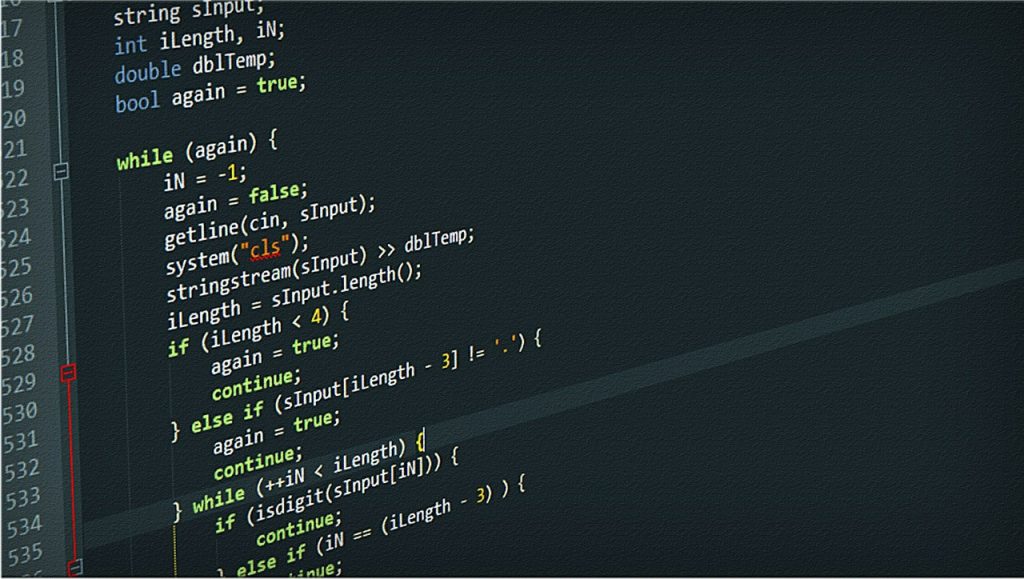If you miss the days when using Linux made you feel weird, or you got bored with traditional programming languages, here's one. list of three not so well known programming languages what can you add to your challenge list for 2020.
These programming languages were created to solve the problems of traditional programming languages (and introduce some new problems) and in many cases they are still under development, so there is no complete documentation or community to turn to in case of problems.
Three little-known languages you can try in 2020
Red
Developers describe it as a new generation language. It is inspired by Rebol and these are some of its characteristics:
- Human-friendly syntax.
- Homoiconic: (Red has its own meta-language and its own data format)
- Functional, imperative, reactive and symbolic programming
- Prototype-based object support
- Macro system
- Wide set of built-in data types (50+)
- A single file (~ 1MB) contains the entire toolchain, complete standard library, and REPL.
- Produces executables of less than 1MB, without dependencies.
- Through a plugin, Visual Studio Code can be used as an integrated development environment.
- Support for the creation of multiplatform graphical interfaces.
- The language does not require installation. You just have to download it, give it execution permissions and run it from the terminal.
Him
Its developers setsna this programming language like efficient, expressive and elegant. Incorporates characteristics of more traditional languages like Python, Ada, and Modula.
Some of its characteristics:
- Nim generates dependency-free native executables, they do not require a virtual machine to run, they are small and allow easy redistribution.
- The Nim compiler and generated executables support all major platforms such as Windows, Linux, BSD, and macOS.
- Fast reference count memory management with support for real-time systems.
- Efficiency in code thanks to the implementation of modern concepts such as zero overhead iterators and compile-time evaluation of user-defined functions, in combination with the preference for data types based on values assigned on the stack,
- Support for various backends: compile to C, C ++ or JavaScript.
- Self-contained: the compiler and the standard library are implemented in Nim.
- Powerful macro system.
- Macros don't need to change the syntax of Nim because there is no need for it, the syntax is flexible enough.
- Modern type system with inference of local types, tuples, generic and sum types.
- Statements are grouped by indentation but can span multiple lines.
Nim is available for Windows, Linux and Mac. In the case of Linux, you can use gcc as a compiler.
V
I do not know if that of baptizing programming languages with letters is a fad or a lack of originality.
In the case of V define yourself as a simple language for the creation of programs that are easy to maintain. If you are impatient, this language is what you need as the developers promise that reading the documentation will not take you more than half an hour. They ensure that after you do it, you can do with V the same as you do with traditional programming languages.
These are some of its characteristics:
- Faster than C.
- Interoperable with C without lag.
- Compile to native binaries without any dependencies and regardless of the operating system.
- The language and its standard libraries do not occupy more than 2 mb.
- The only dependency required is a C compiler.
- Ability to test changes without recompiling.
- Powerful graphics libraries based on GDI + / Cocoa Drawing, and OpenGL for 2D / 3D applications. Support for DirectX, Vulkan and Metal anticipated.
- Native multiplatform graphical interface library for building applications with native controls. Support for WinAPI / GDI + on Windows, Cocoa on MacOS. In Linux custom drawing is used
The developers intend to add:
- A visual editor like Delphi to build applications with a native graphical user interface
- IOS / Android compatibility with native controls
- A declarative API similar to SwiftUI and React Native.
V is available for Windows, macOS, Linux, FreeBSD, OpenBSD, NetBSD, DragonflyBSD, and Solaris. How editors can be used Visual Studio Code and Vim.

What a genius these languages hopefully the projects do not fall!
Thanks for comment
Hey.
In that list I would include Gambas (http://gambas.sourceforge.net/en/main.html), a language that, although it has been around for some time, is still a minority. It is very similar to Microsoft's Visual Basic, but more modern. Developing an application for GNU / Linux is very easy and fast (that is its biggest flaw, it is not cross-platform)
A greeting.
Thank you for your suggestion. It is true, Gambas does not have the recognition it deserves